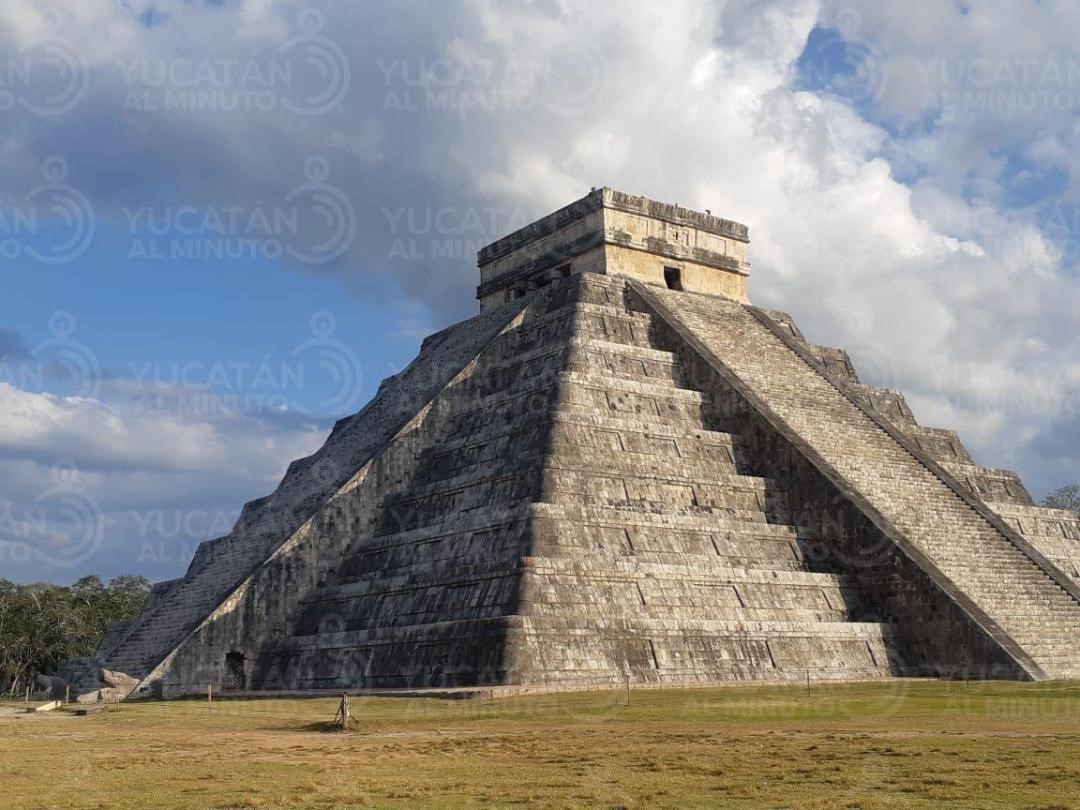The project aims to verify the existence of a hidden chamber.
A project in which UNAM, the National Science Foundation of the United States, the Fermi National Accelerator Laboratory (Fermilab) and the Dominican and Virginia universities participate, will study “the bowels” of the pyramid known as “El Castillo” in Chichén Itzá in order to check the existence of a hidden camera in the second substructure of the building.
Starting next summer, specialists will work on the x-ray of the Kukulcán pyramid as part of the NAUM project, acronym in English for Non-Invasive Archaeological Muography.
Muography, in its broadest definition, is an academic and applied field of research that uses naturally produced elementary particles, cosmic-ray muons, to investigate natural objects and phenomena, as well as human society, infrastructure and culture.
To achieve the objective, cosmic ray detectors will be used, a technique that was also used by the American scientist Luis Álvarez in the pyramid of Giza, in Egypt, a little more than half a century ago, and by Arturo Menchaca Rocha, former director of the Institute of UNAM Physics in the Pyramid of the Sun, in Teotihuacan.
Menchaca Rocha and Edmundo García Solís, professor and researcher at Chicago State University (CSU), United States, shared with Gaceta UNAM that after the registration of the two already known chambers of substructure one, called Jaguar and Chac Mool, it was decided perform the new scan.
The research has approval from the National Institute of Anthropology and History (INAH) and funding from UNAM, but the device is not yet ready. It is being built in Chicago and before being placed in Chichen Itzá it will be tested at the facilities of UNAM’s Physics Institute in Mexico City.
Once the equipment arrives at the archaeological site, the so-called “x-ray” of El Castillo will take approximately six months to be completed.

Cosmics ray detector
The technique utilized in the Kukulcán pyramid uses a detector that contains scintillating plastic that produces a light signal every time a muon passes through it. Muons are particles with a negative electrical charge like the electron, but with a mass more than 200 times greater.
“The cosmic rays that reach our planet from the Universe are composed of 90 percent hydrogen nuclei (protons). This type of radiation has such an amount of energy that other particles are produced when it bombards the Earth’s atmosphere. Initially these are the so-called pions, from whose rapid decay the muons result. The latter are penetrating particles that constitute the most abundant, electrically charged, cosmic radiation that falls on the Earth’s surface,” explains UNAM.
When scanning the structure of Chichén Itzá, it is likely that the detector will find some irregularity and that would indicate a change in density in the structure of the construction, which could be a chamber or a cavity.
These signals will be sent to the participating universities for analysis.
UNAM will be in charge of the mechanical structure, installation and technical support.
San Miguel Times
Newsroom

